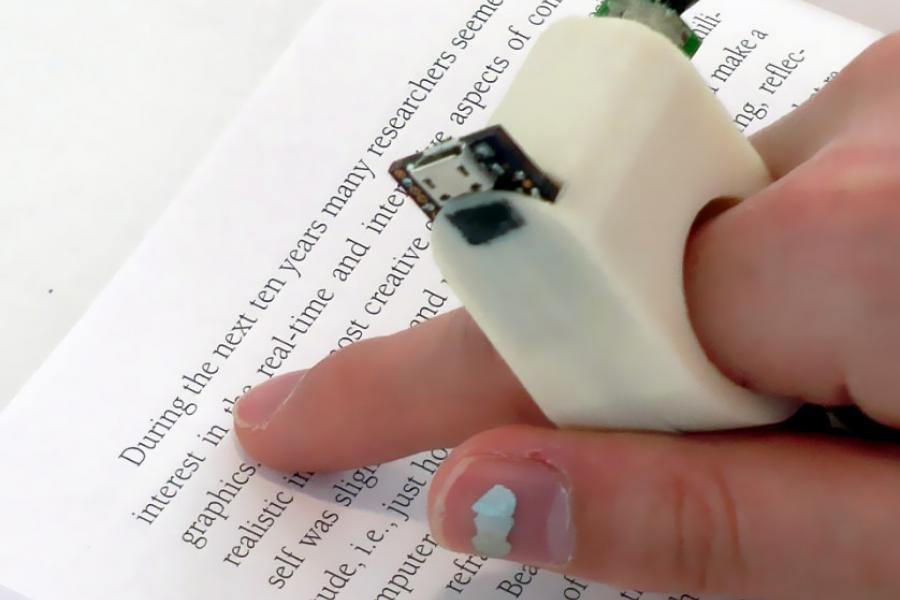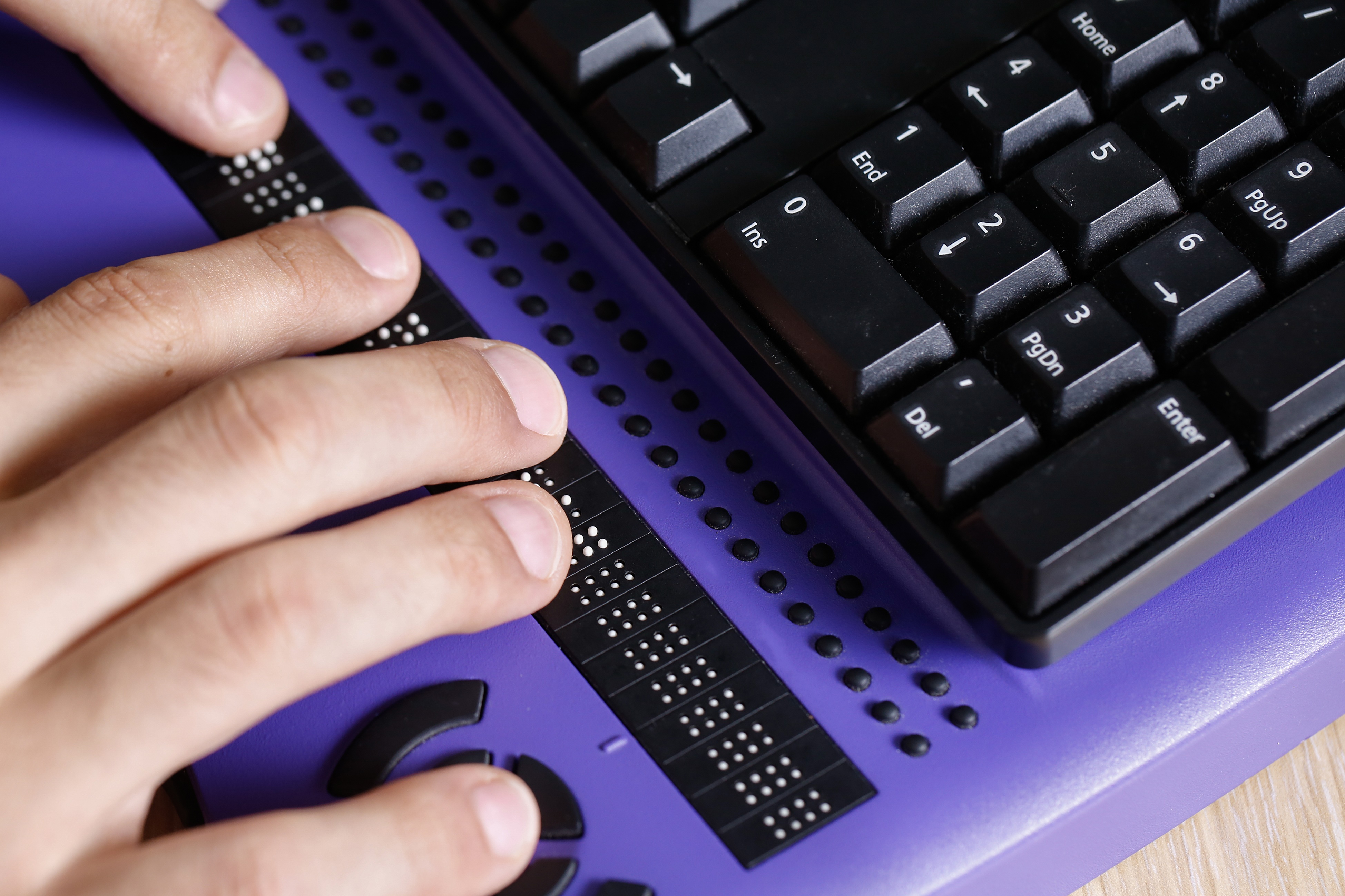AI-Powered Visual Aids: Enhancing Independence for Blind Users
AI-Powered Visual Aids: Enhancing Independence for Blind Users
Blog Article
Empowering Independence With Assistive Technology for the Blind
The assimilation of assistive technology into the lives of people with visual impairments stands for a considerable development in advertising independence and self-sufficiency. From ingenious screen viewers to advanced smart canes, these devices not only boost daily navigating and communication yet additionally encourage users to involve meaningfully in numerous elements of life. As we explore the myriad advantages and real-world applications of these modern technologies, it ends up being important to check out the underlying elements that add to their efficiency and the potential for future growths in this crucial area.
Review of Assistive Technology

The growth of assistive innovation is based in principles of inclusivity and empowerment. Technologies in software application, hardware, and sensory improvements offer users with alternatives tailored to their specific needs. From screen visitors that convert text to speech, to tactile gadgets that convey info with touch, these tools change the means individuals involve with their environments.
In addition to sensible applications, assistive technology promotes better social inclusion and engagement in various markets, consisting of education and learning and employment (Assistive technology for the blind). As r & d remain to develop, the capacity for assistive innovation to better enhance the lives of visually impaired people stays appealing, leading the way for a more equitable society where everyone can thrive
Sorts Of Assistive Tools
A selection of assistive devices have actually emerged to sustain people with aesthetic disabilities, each designed to fulfill certain requirements and boost day-to-day performance. These gadgets vary from low-tech remedies to sophisticated innovations, providing diverse options for users.
Low-tech tools include magnifiers and large-print materials that assist in reading and writing. Braille tools, such as Braille slates and styluses, allow tactile reading and communication. Positioning and flexibility help, like white canes, help individuals browse their setting safely.
On the higher end of the spectrum, electronic magnification systems and display viewers offer substantial assistance. Electronic magnifiers allow users to expand message and pictures on displays, while screen visitors transform electronic web content right into synthesized speech, helping with accessibility to info on smartphones and computer systems.
Mobile phone applications additionally play an important function, providing features like message recognition and navigation assistance. Wearable innovation, such as clever glasses geared up with increased reality, is becoming an appealing tool to enhance situational awareness.
Advantages of Assistive Innovation
The combination of assistive modern technology significantly boosts the lifestyle for individuals with aesthetic impairments. These innovations encourage customers by advertising independence, enabling them to navigate their atmospheres better and perform daily tasks with higher ease. As an example, screen viewers and magnification software enable people to gain access to electronic information, promoting expert and instructional chances that may have previously been out of reach.
In addition, assistive gadgets such as clever canes and general practitioners applications provide real-time navigation support, boosting movement and safety. This boosted freedom not just improves self-esteem but also urges social involvement, permitting customers to get involved even more fully in their communities.
Assistive technology likewise promotes communication, helping users get in touch with others via voice recognition and text-to-speech applications. This capacity is essential for maintaining connections and accessing vital details.
In addition, the modification alternatives offered with numerous assistive innovations ensure that customers can customize gadgets to their certain demands, better enhancing functionality and effectiveness. In general, the benefits of assistive innovation for individuals with visual impairments are profound, promoting an extra comprehensive society where every person can description seek their ambitions and goals.
Study and Success Stories
Highlighting the transformative impact of assistive modern technology, numerous case researches show just how individuals with aesthetic disabilities have actually successfully incorporated these devices right into their every day lives. One compelling instance includes an university student who made use of display analysis software to browse on the internet resources and scholastic products effectively. This innovation not just promoted her education and learning but also improved her confidence in taking part in conversations and team tasks.
An additional study includes a specialist that uses a smart device application made for navigating and object recognition. By utilizing this application, he has actually restored autonomy in both his personal and work settings, allowing him to commute independently and involve with coworkers better.
Additionally, a retiree shared her experience with braille e-readers, which enabled her to access a vast array of literary works and remain gotten in touch with her area via publication clubs.
These success tales underscore the crucial duty of assistive modern technology in cultivating self-reliance, boosting quality of life, and promoting social integration for individuals with visual problems (Screen readers for the blind). By welcoming these cutting-edge devices, users can overcome challenges and confiscate possibilities that add to their personal and specialist fulfillment

Future Trends in Assistive Technology
Development in assistive technology is poised to redefine the landscape of assistance for people with visual impairments. Arising fads stress the combination of expert system (AI) and artificial intelligence, which improve the performance of tools that assist with navigating and information access. AI-driven applications are currently qualified of interpreting aesthetic data in real-time, enabling customers to engage with their environment extra separately.
Additionally, the development of wearable modern technology is advancing swiftly. Smart glasses geared up with increased truth (AR) can give audio descriptions of environments, changing how users communicate with public spaces. These tools not just promote freedom yet likewise foster social addition.
In Addition, the Internet of Things (IoT) is making homes smarter, allowing for smooth connection in between assistive devices and day-to-day devices. This connectivity empowers individuals by making it possible for computerized responses and voice-activated controls tailored to individual requirements.
Final Thought
To try this web-site conclude, assistive modern technology plays a pivotal role in equipping individuals with visual impairments by enhancing their self-reliance and interaction with their surroundings. The varied range of applications and tools readily available not just helps with navigating and communication yet also promotes social assimilation and possibilities for expert and individual growth. As improvements proceed in this area, the capacity for enhancing the lifestyle read this post here for those with visual problems will increase, fostering greater freedom and empowerment.

Report this page